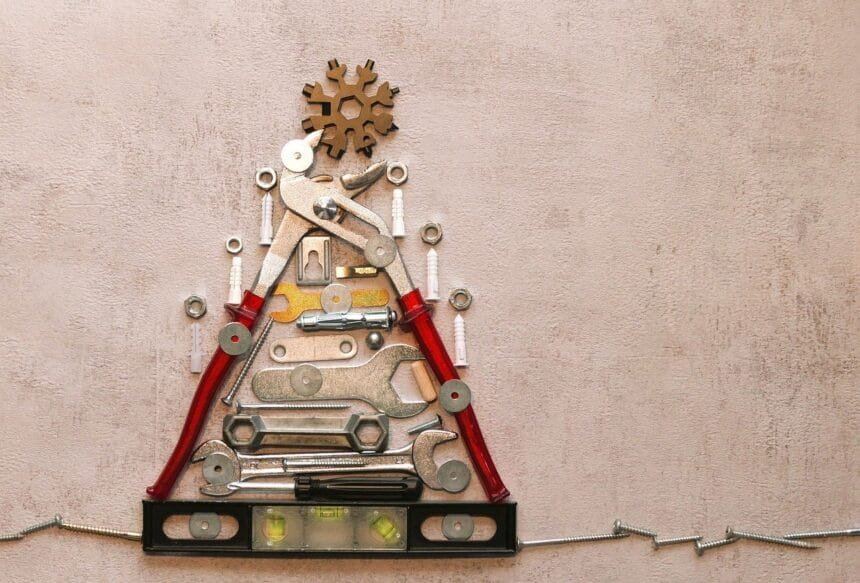When working on mechanical systems, particularly vehicles, you’ll encounter a wide variety of tools designed to handle specific tasks. One such tool that plays a vital role in maintaining and repairing clutches is the clutch drive tool. But what is a clutch drive tool? If you’re not familiar with it, this tool is essential for tasks related to the clutch mechanism in both manual and automatic transmission systems. In this article, we will explore in detail what a clutch drive tool is, how it functions, its uses, and why it is crucial for ensuring smooth operation in vehicles.
What is a Clutch Drive Tool: An Overview
A clutch drive tool is a specialized mechanical tool used to engage, disengage, or manipulate a vehicle’s clutch during maintenance, repairs, or assembly. This tool is designed to allow a technician to install, adjust, or replace components of the clutch system, such as the pressure plate, clutch disc, or flywheel. It is commonly used in both automotive and motorcycle repair settings, especially in cases where the clutch mechanism needs precise adjustments or installations.
The design of a clutch drive tool varies depending on the type of vehicle or machinery it is intended for. However, its primary function remains consistent: to assist in the proper installation and operation of the clutch components to prevent damage and ensure optimal performance.
How Does a Clutch Drive Tool Work?
A clutch drive tool typically works by providing the necessary torque or mechanical advantage required to manipulate various parts of the clutch system. When you ask, “What is a clutch drive tool?” it’s helpful to understand its basic working principles:
- Engagement of the Clutch Disc: One of the primary functions of a clutch drive tool is to assist in engaging the clutch disc during installation. The tool helps align the disc with the flywheel and pressure plate, ensuring that the components are in proper position before final assembly.
- Torque Application: The tool allows technicians to apply the correct amount of torque to clutch bolts or fasteners without over-tightening or damaging the components. This ensures that the clutch system is properly secured and operates smoothly.
- Rotation and Adjustment: Many clutch drive tools are designed with mechanisms that allow them to rotate or adjust the clutch components during the repair process. This can be critical for making fine-tuned adjustments to clutch pressure or alignment.
- Disengagement of the Clutch: Some clutch drive tools can be used to disengage or separate the clutch assembly for maintenance or repair. The tool might provide leverage or assist in pulling the clutch apart for inspection and replacement.
Types of Clutch Drive Tools
There are various types of clutch drive tools designed for specific tasks within the clutch system. Each tool serves a unique purpose in maintaining or replacing clutch components. Here’s a look at the most common types:
- Clutch Alignment Tools: These are perhaps the most widely used clutch drive tools. Alignment tools are used to ensure that the clutch disc is correctly aligned with the flywheel during installation. This tool is essential for preventing issues such as clutch slipping or improper engagement.
- Clutch Removal Tools: When it comes time to remove a worn-out or faulty clutch, a clutch removal tool is used to disconnect the clutch assembly from the engine. This tool typically includes a mechanism for applying force to the pressure plate or flywheel, making it easier to remove these components without damage.
- Clutch Spring Compressors: These tools are used for compressing the springs within the clutch assembly, typically in the pressure plate. The spring compressor tool allows technicians to work with the components without them springing back and causing injury or damage.
- Clutch Installation Tools: After disassembling the clutch system, the installation tool ensures that new components, like the clutch disc and pressure plate, are installed correctly. These tools typically provide the necessary pressure to seat the components without causing misalignment or damage.
- Clutch Adjustment Tools: These tools are used to adjust the amount of pressure applied by the clutch system, particularly in hydraulic or pneumatic systems. The adjustment tool ensures that the clutch engages and disengages smoothly without slipping.
Why Is a Clutch Drive Tool Necessary?
Understanding what is a clutch drive tool goes hand in hand with recognizing its importance in the maintenance and repair of clutches. Without the right tools, performing clutch repairs can become incredibly difficult and prone to errors. Here are some reasons why a clutch drive tool is necessary:
- Precise Clutch Installation: When installing a new clutch, aligning and positioning each component correctly is crucial for smooth operation. The clutch drive tool ensures that the clutch disc, pressure plate, and flywheel are all properly aligned.
- Prevents Damage to Components: Incorrect installation or removal of clutch components can lead to expensive repairs. Using a clutch drive tool minimizes the risk of damaging delicate parts of the clutch system, such as the springs or pressure plate.
- Increases Efficiency: When performing clutch repairs, a clutch drive tool saves time by simplifying complex tasks like alignment and torque application. It allows mechanics to focus on other aspects of the repair, improving overall efficiency.
- Improves Safety: Clutch repair can involve high levels of torque and heavy lifting, particularly when removing or installing large components like the flywheel. A clutch drive tool provides the leverage and control needed to safely handle these parts.
Common Issues and How a Clutch Drive Tool Can Help
Several issues may arise when dealing with a vehicle’s clutch system, and a clutch drive tool is often essential in addressing these problems. Some common clutch-related issues include:
- Clutch Slipping: If the clutch disc is not correctly aligned or is not fully engaging with the flywheel, it can result in slipping. Using a clutch alignment tool can ensure that the clutch components are properly positioned, reducing the risk of slipping.
- Difficulty Engaging or Disengaging the Clutch: If the clutch does not fully engage or disengage when you press the pedal, it may be due to improper installation or pressure plate issues. A clutch drive tool can assist in adjusting the pressure plate or disengaging the clutch for inspection and repair.
- Uneven Wear on Clutch Components: Uneven wear can occur when the clutch system is not properly installed or when components are not aligned. The clutch drive tool ensures that all parts are correctly positioned, helping to prevent uneven wear and prolonging the lifespan of the clutch system.
- Noisy Clutch Operation: A noisy clutch could be a result of improper assembly or damaged components. Using the appropriate clutch drive tool for removal, inspection, and installation can help address the root cause of the noise and fix it effectively.
How to Properly Use a Clutch Drive Tool
Now that we’ve discussed what is a clutch drive tool and its various applications, it’s important to understand how to properly use one to achieve the desired result. Here are some key steps for using a clutch drive tool effectively:
- Read the Instructions: Always read the manufacturer’s instructions for your specific clutch drive tool. Each tool has different functions, and it’s essential to understand how it should be used.
- Ensure Proper Alignment: Whether you’re installing or removing components, always ensure that everything is aligned correctly before applying force. Misalignment can result in damage to the components or tool.
- Use the Right Tool for the Job: Using the correct clutch drive tool for the task is crucial. For example, do not use an alignment tool for spring compression. Each tool has a specific purpose, and using the wrong one can cause complications.
- Apply Even Pressure: When using a clutch drive tool, especially those that require torque application, always ensure that pressure is applied evenly. Uneven pressure can cause the clutch components to become warped or damaged.
Conclusion
In conclusion, understanding what is a clutch drive tool and how it functions is essential for anyone involved in automotive repair or maintenance. This tool plays a vital role in the proper installation, removal, and adjustment of clutch components, ensuring that your vehicle operates smoothly and safely. Whether you’re dealing with alignment issues, clutch slipping, or simply performing routine maintenance, the clutch drive tool helps make the job more efficient and effective.
By using the right tools for the job, you can prevent damage, improve the performance of your clutch system, and extend the lifespan of your vehicle. With a variety of clutch drive tools available for different tasks, there is a solution for every clutch-related problem.
FAQs
- What does a clutch drive tool do?
A clutch drive tool helps align, install, and adjust the components of a clutch system, ensuring proper functionality.
- How do I use a clutch alignment tool?
A clutch alignment tool is used to position the clutch disc correctly with the flywheel during installation to prevent slipping or misalignment.
- Can I repair my clutch without a clutch drive tool?
It is possible but highly inefficient and risky. Using the proper tools ensures a correct and safe repair.
- What types of clutch drive tools are there?
Common types include alignment tools, removal tools, spring compressors, installation tools, and adjustment tools.
- How can I maintain my clutch drive tool?
Regularly clean and lubricate your clutch drive tool, and store it in a safe, dry place to ensure longevity.










